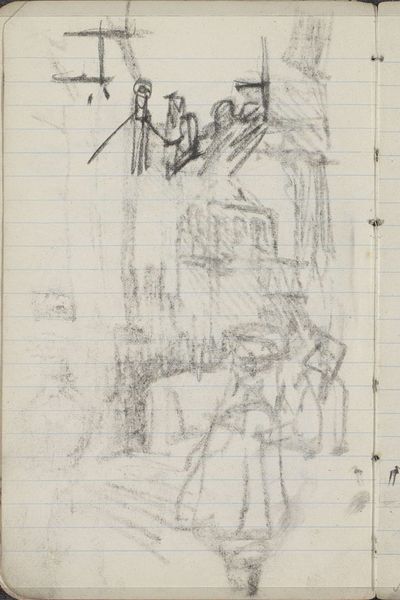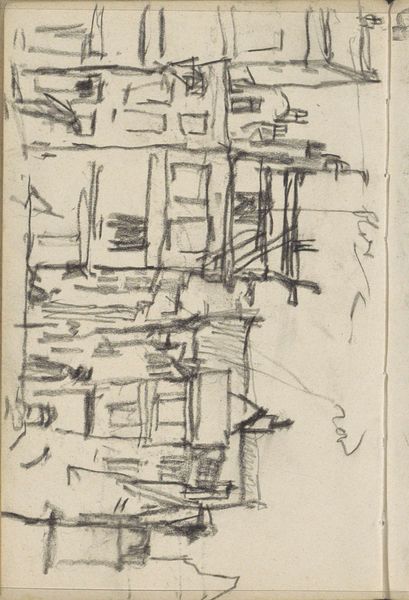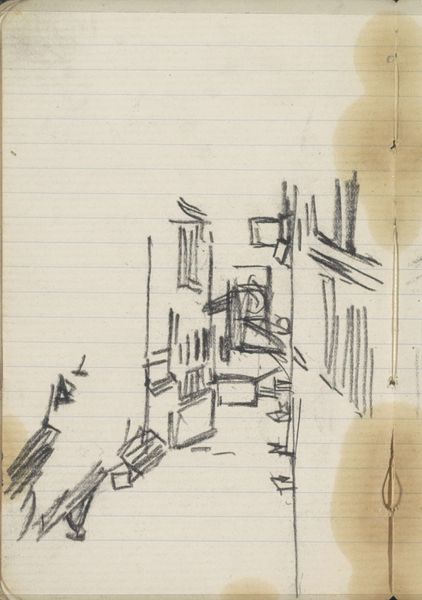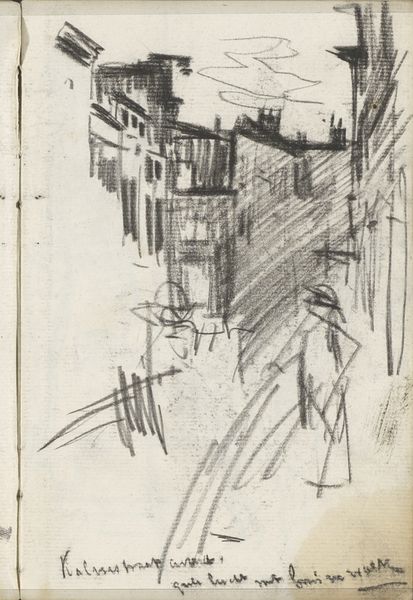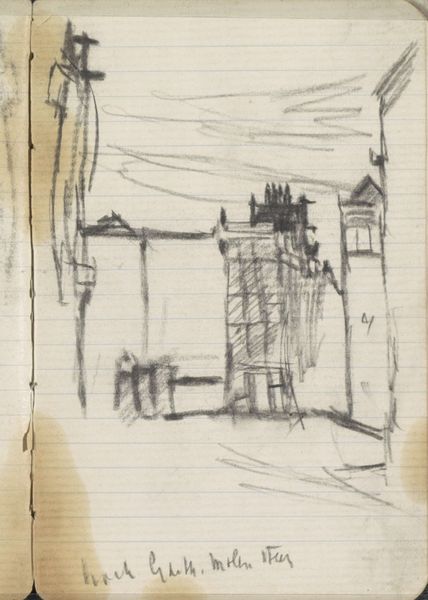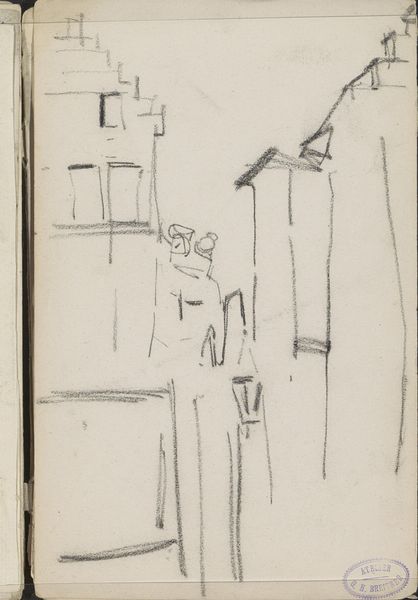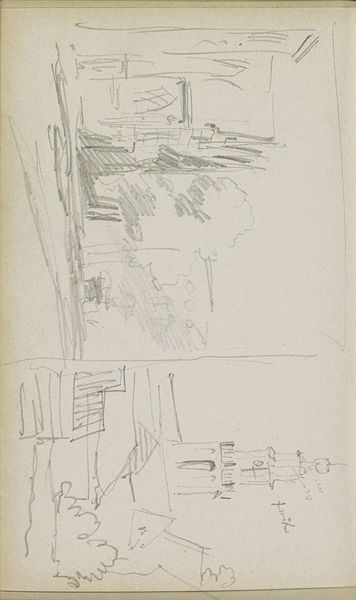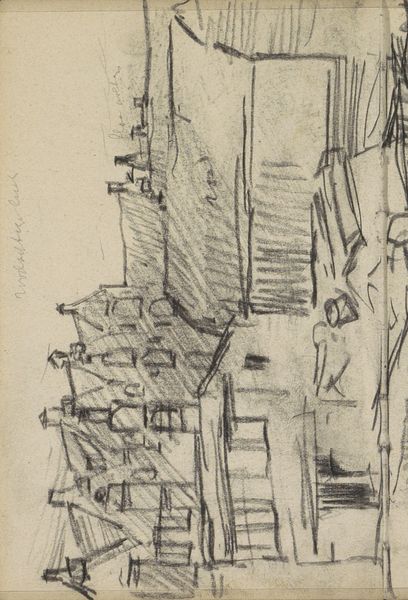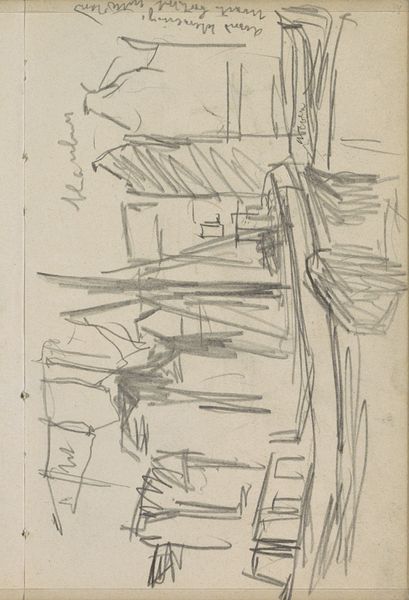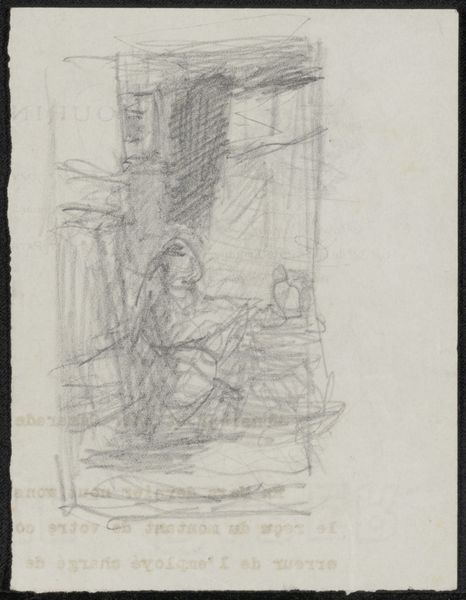
Copyright: Rijks Museum: Open Domain
Editor: This is George Hendrik Breitner's "Gezicht op de Nieuwendijk te Amsterdam," created around 1890 to 1900. It's a charcoal drawing on paper, held at the Rijksmuseum. There's something so immediate about the sketchiness, like a captured moment. What do you see in this piece that maybe I'm missing? Curator: Well, as an iconographer, I see how Breitner uses a visual shorthand to evoke a very specific cultural memory of Amsterdam. Notice how the lines, though hastily drawn, still communicate the hustle and bustle of a busy street. Charcoal, in its very ephemerality, mirrors the fleeting nature of urban life. It’s not just a street; it’s *the* Nieuwendijk, a place already steeped in history even then. Do you notice any recurring motifs? Editor: I guess the clothing stands out, and maybe how much of the sketch focuses on buildings. So the motifs speak to a past people recognized? Curator: Exactly. Consider how the clothing styles of the figures trigger recognition. Breitner is documenting a particular time. The built environment acts as a container for human experience, each structure holding stories. It is that symbolic dialogue between person and place. Breitner captures this tension, the feeling of a city constantly evolving yet retaining its unique identity, wouldn't you say? Editor: Absolutely. Thinking about it as a visual symbol makes the sketch feel less like a quick study and more like a deliberate encoding of cultural information. It's amazing how much history can be packed into something that looks so simple. Curator: Indeed, it prompts us to think about how future generations might interpret our own visual representations of urban life. Every image is a piece of cultural memory in the making.
Comments
No comments
Be the first to comment and join the conversation on the ultimate creative platform.
